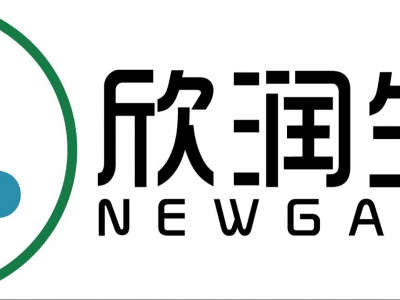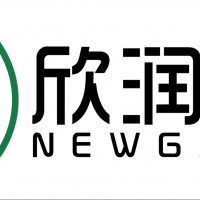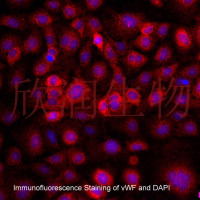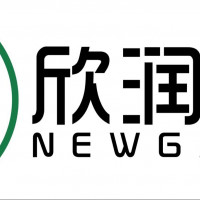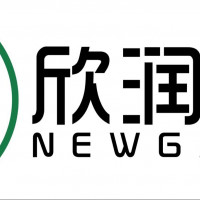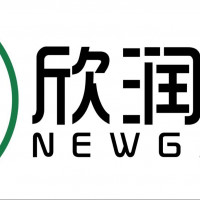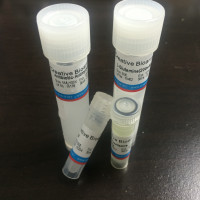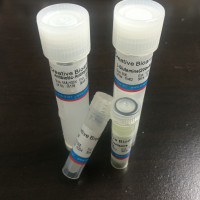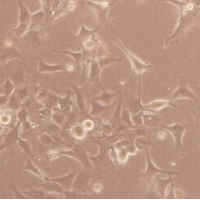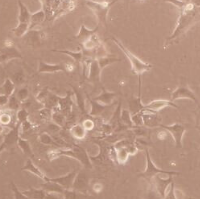- 细胞名称:NCI-H929细胞(人浆细胞白血病细胞)
- 形态:淋巴母细胞样,悬浮生长
- 含量:>1x106 个/瓶
- 污染:支原体、细菌、酵母和真菌检测为阴性
- 规格:T25瓶或者1mL冻存管包装
二、细胞接收后的处理:
1、贴壁细胞
- 收到T25方瓶细胞后,请检查是否漏液,如果漏液,请拍照片发给我们(冻存管细胞收到后直接37℃水浴复苏或直接放置于液氮中长期储存)。
- 请先在显微镜下确认细胞生长状态,去掉封口膜并将T25瓶置于37℃培养约2-3h。
- 弃去T25瓶中的培养基,换用新鲜的完全培养基。
- 如果细胞长满(90%以上)请及时进行细胞传代。
- 接到细胞次日,请检查细胞是否污染,若发现污染或疑似污染,请及时与我们取得联系。
2、悬浮细胞
- 收到细胞后,请检查是否漏液,如果漏液,请拍照片发给我们。
- 请先在显微镜下确认细胞生长状态,去掉封口膜并将15ml离心管置于37℃培养约2-3h。
- 1200rpm离心5min,弃去15ml离心管中的培养基,细胞沉淀用新鲜的完全培养基重悬并培养。
- 如果细胞长满(90%以上)请及时进行细胞传代。
- 接到细胞次日,请检查细胞是否污染,若发现污染或疑似污染,请及时与我们取得联系。
本公司的细胞培养操作规程,供参考
一、培养基及培养冻存条件准备:
- 准备RPMI-1640培养基,90%;优质胎牛血清,10%;0.05mM 2-mercaptoethanol
- 培养条件: 气相:空气,95%;二氧化碳,5%。 温度:37℃,培养箱湿度为70%-80%。
- 冻存液:90%血清,10%DMSO,现用现配。液氮储存。
对于贴壁细胞,传代可参考以下方法:
- 弃去培养上清,用不含钙、镁离子的PBS润洗细胞1-2次。
- 加2ml消化液(0.25%Trypsin-0.53mM EDTA)于培养瓶中,置于37℃培养箱中消化2-3分钟,然后在显微镜下观察细胞消化情况,若细胞大部分变圆并脱落,迅速拿回操作台,轻敲几下培养瓶后加入3ml此细胞的培养基终止消化。
- 轻轻吹打后吸出,移入15ml离心管中,在1200RPM条件下离心5分钟,弃去上清液,加入1mL培养液后吹匀。
- 移入到事先准备好的含有5ml培养基的T-25培养瓶中或含有14ml培养基的T-75培养瓶中培养。
3)细胞冻存:待细胞生长状态良好时,可进行细胞冻存。贴壁细胞冻存时,先要消化处理并进行细胞计数。消化方法按照细胞传代方法的1-3步骤进行,最后的重悬液使用血清。悬浮细胞直接计数后离心,用血清重悬浮,加DMSO至最终浓度为10%。加入DMSO后迅速混匀,按每1ml的数量分配到冻存管中。本公司按每个冻存管细胞数目大于1X106个细胞冻存。
注意事项:
1. 收到冻存管细胞后,若发现干冰已挥发干净、冻存管瓶盖脱落、破损及细胞有污染,请立即与我们联系。
2. 所有动物细胞均视为有潜在的生物危害性,必须在二级生物安全台内操作,并请注意防护,所有废液及接触过此细胞的器皿需要灭菌后方能丢弃。
3. 细胞用途:仅供科研使用。
发货方式:
复苏后发货:我们复苏细胞后发货,货期一周左右,免运费。(气温较好建议复苏后发货)
冻存发货(干冰运输):需额外增加干冰运费,选择干冰运输的我们发两管细胞,为了保证客户接种可靠性多发一管。(气温低于0℃须冻存发货)
细胞发货采取专业的运输包装,并选择最快捷的运输方式(顺丰速运或其他空运快递)
Monensin-mediated growth inhibition in NCI-H929 myeloma cells via cell cycle arrest and apoptosis
Previously, we showed that monensin, Na+ ionophore, potently inhibited the growth of acute myelogenous leukemia and lymphoma cells. Here, we investigated the antiproliferative effect of monensin on human myeloma cell lines. Monensin significantly inhibited the proliferation of myeloma cell lines examined with IC50 of about 1 muM. Cell cycle analysis indicated that monensin induced a G(1) and/or a G(2)-M phase arrest in these cell lines. To address the mechanism of the antiproliferative effect of monensin, we examined the effect of this drug on cell cycle-related proteins in NCI-H929 cells. Monensin decreased the levels of CDK2, CDK6, cdc2, cyclin A, cyclin B1, cyclin D1 and cyclin E proteins but did not alter CDK4 protein. While p21 was increased by monensin, p27 was not. In addition, monensin markedly enhanced the binding of p21 with CDK6 and cdc2. Furthermore, the activities of CDK2- and CDK6-associated kinases were reduced in association with hypophosphorylation of Rb protein. The activity of cdc2-associated kinase was decreased, which was accompanied by reduction of cdc25C phosphatase. Also, monensin induced apoptosis in myeloma cells, as evidenced by annexin V binding assay and flow cytometric detection of sub-G, DNA content. This apoptotic process was associated with down-regulation of Bcl-2, loss of mitochondria transmembrane potential (Deltapsi(m)) and an increase of caspase-3 activity. In addition, monensin caused the upregulation of ERK and p38 kinase activities. Taken together, these results have demonstrated for the first time that monensin potently inhibited the proliferation of human myeloma cell lines, especially NCI-H929 cells, via cell cycle arrest in association with p21 and apoptosis.
Laser biomodulation on L 929 cell culture.
OBJECTIVE: The aim of the present study was to analyze the effects of photobiomodulation using a 904-nm diode laser at two energy densities (6 J/cm(2) and 50 mJ/cm(2)) on L929 fibroblast cells. BACKGROUND: Low-power laser irradiation (LPLI) is a non-pharmacological resource that induces important in vitro photobiomodulation on cell cultures and tissues. METHODS: Irradiation was performed for three days at 24-h intervals. After each interval, the cells were stained with MitoTracker Orange and DioC6 dyes to assess the photobiomodulatory effects of irradiation on mitochondrial activity and changes in the endoplasmic reticulum. The MTT assay [3-(4.5-dimethylthiazol-2-yl)-2.5 diphenyltetrazolium bromide] was used to evaluate cell proliferation. RESULTS AND CONCLUSIONS: The fluorescence microscopy assessment of mitochondria and endoplasmic reticulum in cells irradiated with 6 J/cm(2) and 50 mJ/cm(2) demonstrated intense mitochondrial activity, which was confirmed by DioC6 staining. Reticular activity was observed stemming from increased protein synthesis. Photobiomodulation with 50 mJ/cm(2) was slightly higher than with 6 J/cm(2), as demonstrated by fluorescence microscopy results. Photobiomodulation was also time-dependent, with better results 72-h after irradiation.

